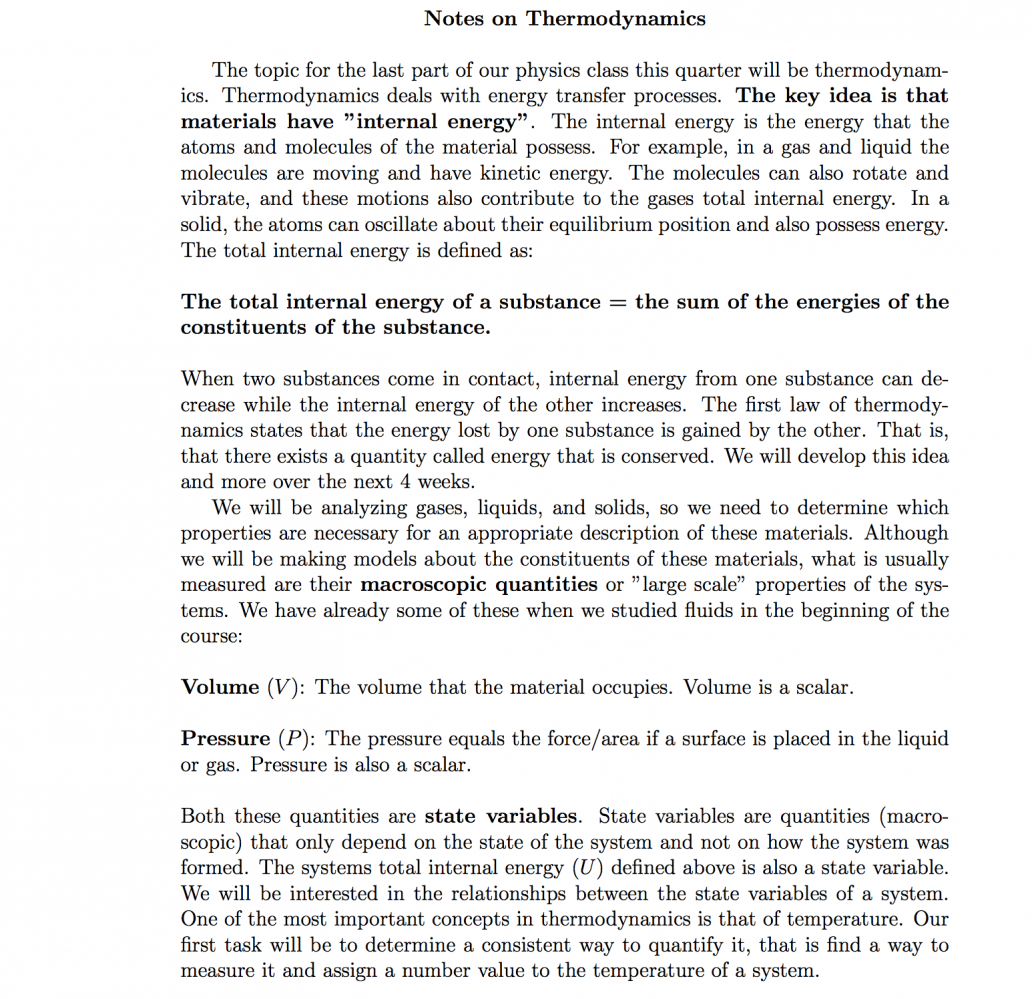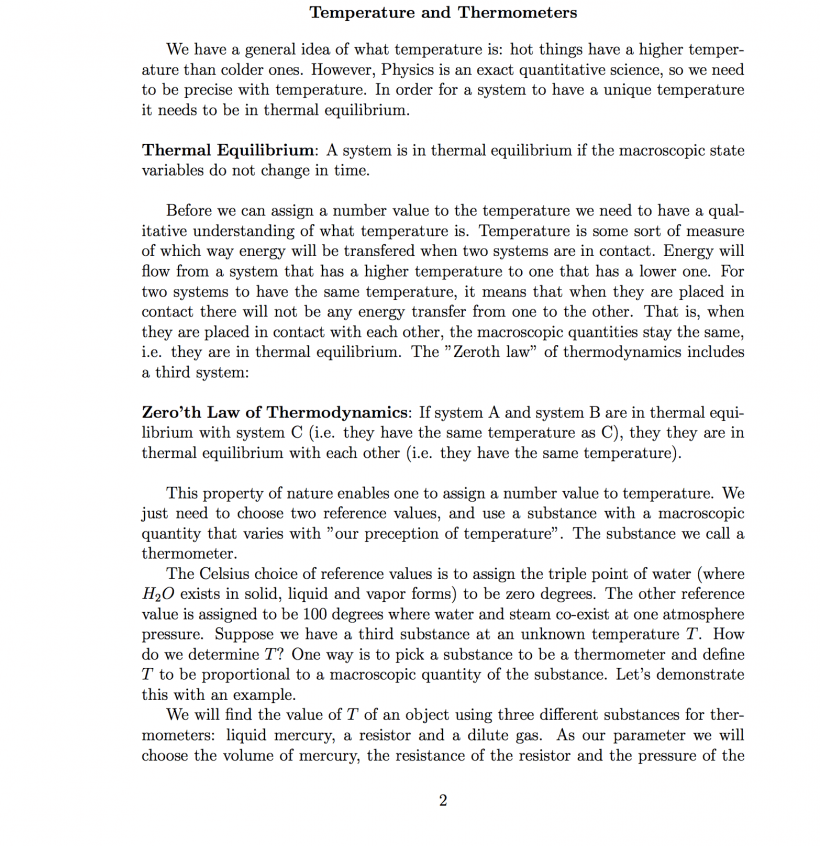Notes on Thermodynamics
Notes on Thermodynamics
The topic for the last part of our physics class this quarter will be thermodynam- ics. Thermodynamics deals with energy transfer processes. The key idea is that materials have ”internal energy”. The internal energy is the energy that the atoms and molecules of the material possess. For example, in a gas and liquid the molecules are moving and have kinetic energy. The molecules can also rotate and vibrate, and these motions also contribute to the gases total internal energy. In a solid, the atoms can oscillate about their equilibrium position and also possess energy. The total internal energy is defined as:
The total internal energy of a substance = the sum of the energies of the constituents of the substance.
When two substances come in contact, internal energy from one substance can de- crease while the internal energy of the other increases. The first law of thermody- namics states that the energy lost by one substance is gained by the other. That is, that there exists a quantity called energy that is conserved. We will develop this idea and more over the next 4 weeks.
We will be analyzing gases, liquids, and solids, so we need to determine which properties are necessary for an appropriate description of these materials. Although we will be making models about the constituents of these materials, what is usually measured are their macroscopic quantities or ”large scale” properties of the sys- tems. We have already some of these when we studied fluids in the beginning of the course:
Volume (V ): The volume that the material occupies. Volume is a scalar. Pressure (P ): The pressure equals the force/area if a surface is placed in the liquid
or gas. Pressure is also a scalar.
Both these quantities are state variables. State variables are quantities (macro- scopic) that only depend on the state of the system and not on how the system was formed. The systems total internal energy (U) defined above is also a state variable. We will be interested in the relationships between the state variables of a system. One of the most important concepts in thermodynamics is that of temperature. Our first task will be to determine a consistent way to quantify it, that is find a way to measure it and assign a number value to the temperature of a system.
1
NotesHunt.com
Temperature and Thermometers
We have a general idea of what temperature is: hot things have a higher temper- ature than colder ones. However, Physics is an exact quantitative science, so we need to be precise with temperature. In order for a system to have a unique temperature it needs to be in thermal equilibrium.
Thermal Equilibrium: A system is in thermal equilibrium if the macroscopic state variables do not change in time.
Before we can assign a number value to the temperature we need to have a qual- itative understanding of what temperature is. Temperature is some sort of measure of which way energy will be transfered when two systems are in contact. Energy will flow from a system that has a higher temperature to one that has a lower one. For two systems to have the same temperature, it means that when they are placed in contact there will not be any energy transfer from one to the other. That is, when they are placed in contact with each other, the macroscopic quantities stay the same, i.e. they are in thermal equilibrium. The ”Zeroth law” of thermodynamics includes a third system:
Zero’th Law of Thermodynamics: If system A and system B are in thermal equi- librium with system C (i.e. they have the same temperature as C), they they are in thermal equilibrium with each other (i.e. they have the same temperature).
This property of nature enables one to assign a number value to temperature. We just need to choose two reference values, and use a substance with a macroscopic quantity that varies with ”our preception of temperature”. The substance we call a thermometer.
The Celsius choice of reference values is to assign the triple point of water (where H2O exists in solid, liquid and vapor forms) to be zero degrees. The other reference value is assigned to be 100 degrees where water and steam co-exist at one atmosphere pressure. Suppose we have a third substance at an unknown temperature T. How do we determine T? One way is to pick a substance to be a thermometer and define T to be proportional to a macroscopic quantity of the substance. Let’s demonstrate this with an example.
We will find the value of T of an object using three di↵erent substances for ther- mometers: liquid mercury, a resistor and a dilute gas. As our parameter we will choose the volume of mercury, the resistance of the resistor and the pressure of the
| Download Tag | Notes on Thermodynamics |
| Download Category | Engineering |





Reviews
You must log in and be a buyer of this download to submit a review.